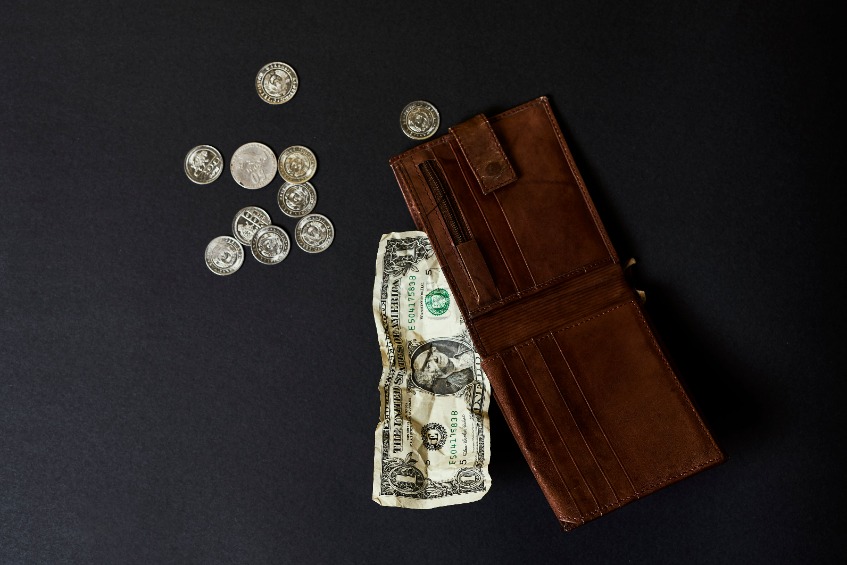[ad_1]

Cryptocurrency is usually a polarising topic. Some consider it’ll change the world. They say we’ll stay in a society with Bitcoin as the reserve forex; we’ll buy our chai tea lattés in Starbucks with digital tokens, after which we’ll publish them on social media domiciled in Web3, with all the pieces working seamlessly by way of decentralised pipelines.
Then there are those that say it’s a whole waste of house, a voraciously capitalist cash-seize awash with Ponzi schemes and shameless promotions (Kim Kardashian, when you’re studying this, I am looking at you).
But even amongst those that are sceptical about crypto, the bulk respect the ability of blockchain expertise and the impression that it might have on society.
One of the extra intriguing parts of blockchain expertise is stablecoins. Simply fiat forex domiciled on the blockchain, it permits customers to bypass the volatility of crypto whereas nonetheless utilising the blockchain. This means the draw back of a portfolio yo-yo-ing all around the store is prevented, but the advantages of blockchain – accessibility, velocity, low cost transactions – could be utilised.
And given a lot of crypto is funnelled by way of USD, all the most important stablecoins are greenback iterations. In a yr the place the dollar has crushed each main forex, whereas nations all over the world struggle towards rampant inflation, this offers residents the chance to park their wealth in USD moderately than maintain their very own (typically unstable) forex.
So, which stablecoin is the most well-liked? And how are they rising? I took a dive into what is probably the most boring crypto on this planet – by way of value volatility – but for a wide range of different causes, is extremely thrilling.
This is the stablecoin report.
Timeline – progress of stables
I look again now in the beginning of 2020 as the “new paradigm” of crypto. COVID broke onto the scene within the first quarter, and following a meltdown in March as the world sat all the way down to try to work out what precisely this coronavirus meant, crypto surged.
It took its place on the centre stage and costs, quantity and liquidity rocketed upwards. Then this yr, in 2022, we transitioned to a brand new age of excessive rates of interest, as the cash printing bonanza of current years caught up with us and inflation flexed its muscle mass.
This despatched tokens crashing. Bitcoin fell from $69,000 to beneath $20,000, and funds flowed out of stablecoins. Some stables have fared higher than others, nevertheless. Hit “play Timeline” on the beneath graph to get an image of the actions over the past two years.
Indeed. A run from $20 billion to $160 billion in two years – that’s an 8X, folks.
Of course, there is the elephant within the room when taking a look at that above graph. And that elephant has a reputation – Terra.
Decentralised vs Centralised
Perhaps blinded by the attract of a decentralised stablecoin, many crypto lovers purchased into TerraUSD (UST). Working off some severely damaged round logic, the stablecoin was backed by Luna, which itself was backed by nothing. A fancy strategy to say it was uncollaterised, and the entire home of playing cards got here tumbling down, dragging lots of the crypto ecosystem with it.
I used to be concerned on this, too, to be truthful. I knew the mannequin was flawed but I assumed it might last more than it did. I’ve written about my involvement within the circus a lot, with this piece detailing me lastly chopping my losses and promoting my UST, swallowing a nasty loss and a moderately disagreeable blow to my already-bruised ego.
But anyhow. Terra is previous tense. The different remaining decentralised secure is DAI, sitting at a market cap of $6 billion. The solely concern right here is that, to me, DAI is simply as damaged as Terra. Sure, the implications received’t be as extreme and this received’t be an insane loss of life spiral, but when you ask me, DAI has the identical likelihood as Terra of ever turning into a good and impactful stablecoin – zero.
That’s as a result of the mannequin makes no financial sense. Overcollateralisation means in an effort to obtain $100 DAI, one should pledge $150 in collateral. That is grossly inefficient and is all it’s good to know. Then there is additionally the truth that it’s not even decentralised, with a lot publicity to USDC and different centralised property.
In order to pursue this seductive high quality of decentralisation, DAI compromised by sacrificing capital effectivity. In a world of rising rates of interest, this may by no means work. And ya…it’s not even decentralised.
A decentralised secure could be incredible, but there is no strategy to make it occur proper now. Hopefully sooner or later it might occur, but I’m not good sufficient to consider how. As for DAI, I can’t ever see it turning into related. It will both die (pun meant, I promise) a gradual loss of life, or take some drastic governance motion as it flails for relevance (appartently it is contemplating not being a stablecoin any longer and as an alternative “removing” the peg, no matter which means).
Centralised stables – Circle taking Tether’s throne?
So this takes us to centralised stables. Not as romantic, but not less than the issues work, proper?
Tether (USDT) is the OG and central to all the pieces within the house, and is the only largest liquidity pair. Yet it continues to face questions concerning its reserves, and within the aftermath of the Terra contagion its peg wavered all the way down to 95 cents.
It must be stated that Tether by no means did not redeem, and bought out huge chunks of their holdings and not using a hitch – a bigger portion of their reserves than most fractional reserve banks would be capable to deal with. But nonetheless, folks holding stables need to have the ability to purchase and promote at that $1 mark – regardless of the place and once they need to.
Circle (USDC) is thus turning into an even bigger competitor, but stays adrift in second place. I modelled up the beneath chart to indicate how Tether has been eroded downward, with the rise of options. A lot of this is as a result of continued narrative that ample reserves will not be held.
2022 contagion
The yr has been a tough one for crypto markets, clearly. Stables are a reasonably good strategy to present this, as capital packed its baggage and flowed out of the system.
I plotted up how completely different stables have fared from January till now. It’s a great way to indicate how Circle has made inroads into Tether’s lead. With Tether shedding $10 billion because the begin of the yr, Circle has really elevated $2 billion.
Binance USD and FTX?
BinanceUSD (BUSD) is one other which has made floor. Up to $22 billion, it is the seventh largest cryptocurrency and third largest stablecoin.
It is being pushed arduous by Binance, the world’s largest cryptocurrency alternate. Recently, the alternate delisted USDC and auto-transformed all holdings into BUSD, which has helped pump the market cap up a bit.
FTX honcho Sam Bankman-Fried referred to it as the “Second Great Stablecoin War”. FTX itself is even planning to launch a stablecoin of its personal.
FTX is the second largest crypto alternate, and it brings up some fascinating questions concerning the advantage of having so many stablecoins out there. In actuality, I’m not certain it issues as lengthy as they’re all managed responsibly with stable reserves and clear reporting – one thing which sure stables are definitely higher than others at.
Conclusion and future
To wrap this up, it has been an immense couple of years for crypto and, by extension, stablecoins. The latter helps onboard folks into crypto. Jumping on-chain but avoiding volatility, stables have an actual use case in an business the place that is not all the time assured.
I put this collectively now as a result of the stablecoin market has remodeled over the past couple of years, but it now seems like we’re embarking upon a brand new part. Binance, FTX and Circle are coming for Tether. Corners insist we want a decentralised secure, but till a plan is drawn up which makes that even theoretically potential, it’s simply fantasy discuss.
Sure, I’d love a decentralised secure. I’d additionally like to get up with the voice of Beyoncé tomorrow morning. Both these issues are equally unlikely proper now, so in the meanwhile we have to chat centralised stables.
It can be fascinating to re-assess these ranks this time subsequent yr, when God is aware of what can have occurred within the crypto markets. Until then, Tether rules the roost – but the pack are chasing arduous.
[ad_2]
Source link



